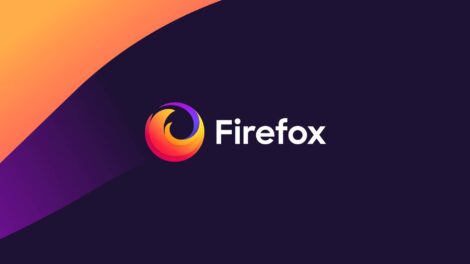During a recent CNBC interview, Apple CEO Tim Cook made an eyebrow-raising statement confirming the company’s massive investments into artificial intelligence and generative AI.
Cook asserted that AI is “one of the most important technologies of our time” and revealed Apple is “investing heavily” in generative AI specifically. Let’s analyze Apple‘s evolving AI strategy and what major commitments to generative models could mean for the company’s future.
What is Generative AI?
Generative AI refers to machine learning models that can create brand new content or output that is unique and original. The “generated” outputs are not just recycled or extracted from an existing dataset.
Key types of generative AI gaining prominence today include:
- Generative text – AI systems like ChatGPT that generate human-like text and dialogue.
- Generative images – AI systems like DALL-E 2 that create photorealistic digital images and art from text prompts.
- Generative video/animation – AI models that synthesize video and animation assets from scratch.
- Generative audio – AI that generates music, text-to-speech voices, sound effects and more.
- Generative 3D – AI systems capable of building 3D models and environments from basic inputs and parameters.
Generative AI stands in contrast to more analytical/extractive techniques focused on classification, predictions, recommendations etc. The generative approach opens doors to automating creative tasks in revolutionary ways.
According to Tim Cook, investing in emergent generative AI is a top priority for Apple right now.
Tim Cook on the Promise of AI
During his CNBC interview at the World Economic Forum Annual Meeting in January 2023, Cook touched on several topics including the possibilities of AI.
Some key comments from Cook about AI:
- Cook asserted AI is “one of the most important technologies of our time”. This shows how crucial Apple views AI strategically.
- Cook said Apple is “investing heavily” in machine learning generally. Not a surprise given 100s of ML-focused acquisitions.
- However, Cook specifically namechecked generative AI as a key focus showing Apple’s interest in creative AI.
- Cook also mentioned Apple is “using AI in all of our products and services”. Underscores AI ubiquity across Apple’s ecosystem.
Clearly, Cook and Apple see massive potential in artificial intelligence, especially creative applications via generative models. But they aren’t starting from scratch.
How Apple Already Uses AI
Many may not realize how pervasive AI has already become across Apple’s products and services. AI enables several marquee features:
Siri – Apple’s digital assistant depends on natural language processing and speech recognition AI to understand commands. Siri can also generate human-like responses using text-to-speech tech.
Photos – Computer vision AI enables organizing photos by people, objects, scenes etc. It also powers search, Memories and Live Photos.
Camera – sophisticated AI/ML models power core camera features from Night Mode to Deep Fusion to Cinematic Video for optimizing image and video quality.
Face ID – Apple’s secure biometric authentication uses AI facial recognition to identify users based on 3D facial maps.
Translate app – AI-based translation allows communicating across virtually any language. On-device processing keeps data private.
Wallet – AI extracts key fields from payment cards, tickets, passes etc added to Wallet for categorizing.
Maps – ML models customize Maps data and routing recommendations optimized for each user based on learned preferences over time.
Fitness Tracking – Machine learning analyzes exercise patterns and form to provide personalized fitness insights and guidance.
As these examples illustrate, AI already underpins some of the most beloved Apple features across the iPhone, iPad, Mac, Apple Watch and more.
But Tim Cook suggests they have barely scratched the surface of what’s possible with artificial intelligence. Massive generative AI investments indicate Apple envisions far more advanced capabilities on the horizon.
Why Apple Is Investing Heavily in Generative AI
Based on Cook’s comments and Apple’s overall strategic direction, we can infer a few key reasons driving their focus on generative AI:
Stay Competitive
Major AI breakthroughs from Google, Meta, DeepMind etc are raising the bar of what users expect from smart assistants and apps. Apple wants Siri, Photos, Camera and other key apps to feel just as advanced.
Enable Creativity
As a company focusing on tools for unleashing creativity, Apple likely realizes how generative AI could empower people to produce digital art, videos, music and more in completely new ways.
Reinvent Core Products
Apple may plan to build generative models into foundational products like iPhone, iPad and Mac to radically reinvent workflows and reimagine how users interact with computing itself.
Build the AI Future
All tech giants like Apple are thinking 5-10 years ahead. Mastering generative AI positions Apple to lead the next era of intuitive human-computer interfaces powered by creative AI.
Monetization Potential
Generative AI services and APIs could emerge as lucrative new revenue streams as Apple expands offerings for enterprise customers.
Essentially, Apple wants to make sure they aren’t left behind as AI propels change across the technology landscape over the next decade. Major investments in generative specifically indicates Apple thinks uniquely creative AI will unlock the future.
How Apple Could Apply Generative AI
Tim Cook did not reveal specifics about how Apple plans to tap into generative AI. But based on emerging generative models, we can speculate about some possible applications across Apple’s products and services:
Personalized Recommendations – Generate highly tailored suggestions for Media content, News stories, Podcasts etc customized to each user’s interests.
Smarter Siri – Take conversational AI to the next level with capabilities like discussing complex topics over multiple exchanges.
Next-Gen Memories – Automatically generate rich, professionally edited Memories videos, collages etc personalized with user’s photos and media.
Text & Call Summarization – Summarize key details and action items from long text conversations and phone calls to highlight important parts.
Automatic Media Editing – Enable easy editing of photos, video and audio through generative models that modify/enhance media upon request.
Immersive AR – Leverage generative 3D models and environments to craft realistic augmented reality experiences on Apple devices.
Custom Avatars – Allow users to train custom AI models that generate interactive 3D avatars with their own voice and personality.
New App Categories – Launch whole new generative app genres like AI art creation, text & code generation, intelligent video editing and more.
We are likely just scratching the surface of how Apple could tap into generative AI to enhance iOS, iPadOS, macOS and more. But some themes seem likely based on Apple’s strengths – personalized experiences, next-level productivity and all-new creative mediums.
How Will Apple Implement Generative AI?
Beyond speculative applications, the next big question becomes: how will Apple effectively implement generative AI across its products?
Here are some likely strategies based on Apple’s historic approach:
On-Device Processing – Apple favors on-device AI processing for privacy and speed. Expect tight Apple silicon integration for tasks like dictation, image editing, avatar animation.
User Privacy – Any data used to train or improve Apple AIs over time will be subjected to stringent privacy protections and anonymization.
Human Oversight – Apple is unlikely to fully automate creative tasks. Instead users will likely drive generative models and retain final say over outputs.
App Store Ecosystem – Apple may enable third-party generative apps through App Store changes and developer tool expansions.
Cloud Supplements – For training largest models, Apple may build out cloud infrastructure while keeping use on-device. Cloud may also deliver fresh model updates.
Hybrid Approach – On-device app execution combined with cloud training and deployment allows customizable experiences while preventing data exploitation.
Apple’s strategy is unlikely to be an all or nothing approach. Expect a hybrid model that plays to Apple’s strengths in both on-device intelligence and data privacy.
Acquisitions to Support Generative AI
While Apple has world-class AI research teams, the company has been aggressively acquiring startups focused on next-generation AI techniques over the past several years.
These acquisitions further confirm Apple is laying the groundwork required to become a generative AI leader. Some notable examples:
Xnor.ai (Jan 2020) – An edge AI startup specializing in running advanced neural networks efficiently on devices like smartphones and embedded systems. Perfect for deploying complex generative algorithms locally.
Voysis (April 2020) – A speech recognition company focused on understanding natural language commands across different contexts. Foundational for training robust virtual assistants.
Inductiv (April 2021) – Developed techniques to automatically identify and correct data bias/errors in ML datasets. Critical for enhancing training data quality for generative models.
AI Music (Aug 2021) – Pioneered generative AI for creating dynamic personalized soundtracks on the fly based on inputs. Could spawnApple generative music/audio.
Lumeris (Nov 2021) – Focused on AI for enhancing medical imaging. Those capabilities could translate to generative photo/video editing in Apple Photos.
Dozens more AI and ML companies have been scooped up by Apple in recent years. Apple is absorbing all this talent and technology to assemble the best possible infrastructure for generative AI R&D.
While it may take years for consumer offerings to materialize, Apple is already laying the groundwork across its devices, software, services, and infrastructure to get ahead of the curve.
Privacy Concerns Around Large Generative Models
However, Apple may need to tread carefully when developing large, data-intensive generative systems. Models like GPT-3 and DALL-E 2 raised privacy concerns through their training processes.
Critics pointed out these models scrape massive amounts of text or images from the web without user consent. They can also inadvertently absorb and later regurgitate harmful biases found online.
Apple will need to establish rigorous data collection, cleaning, and documentation standards before training any models on users’ personal data. Only opt-in, anonymized data should be considered.
Generating synthetic training data could be one approach to avoiding large-scale data harvesting. Apple may also restrict its largest models to company-owned cloud infrastructure versus relying on contracts with AI giants like Google or Meta.
Maintaining user trust through transparency and privacy assurances will be pivotal as Apple explores scalable generative AI initiatives. The company can’t risk reputational damage repeating Big Tech’s missteps.
What This Means for the Future of Apple
While Tim Cook only hinted at Apple’s aspirations in generative AI, his comments may offer an enormous glimpse into the company’s future.
If executed thoughtfully and deliberately over time, versatile generative technology could provide Apple a transformative new pillar as smartphone sales plateau. Seamlessly integrated AI could spur hardware innovation or even paradigm shifts in how users interact with devices.
Rather than iteratively refining existing product lines, Apple may envision AI-centric features and experiences enabling unforeseen new product categories. Generative models could also unlock valuable monetization models beyond just device sales.
Ultimately, Cook’s openness about aggressive generative AI investment confirms it will almost certainly factor prominently into the company’s next decade. Expect Apple to methodically build internal expertise until generative technology reaches commercial viability.
But Apple must emphasize privacy protection and user control along the journey. Overall, the progress in the coming years promises to be fascinating as Apple aims to once again realign consumer technology through ambitious AI.
Frequently Asked Questions About Apple and Generative AI Plans
Here are some common questions about Apple CEO Tim Cook revealing major investments in generative AI:
Q: What Apple products currently use AI?
A: AI powers features across Apple’s ecosystem including Siri, Camera, Photos, Maps, Fitness Tracking, Face ID, Translate App, and more.
Q: What are the benefits of generative AI models?
A: Generative AI can create original text, images, videos, 3D models, music and more. This unlocks new creativity potential compared to just analyzing data.
Q: How could Apple use generative AI in the future?
A: Possible applications include smarter assistants, automatic content creation, immersive AR, customized recommendations, easier editing tools, new app genres and more.
Q: When will Apple release its first consumer generative AI features?
A: It’s unclear, but likely years away still. Apple is known for taking extra time to polish complex technologies like AI before public release.
Q: Will generative AI be supported across Apple’s ecosystem?
A: Apple will likely aim to integrate generative AI tightly into iOS, iPadOS, macOS, tvOS, and watchOS to enable consistent experiences on iPhone, Mac, Apple TV etc.
Q: Could generative models compromise user privacy?
A: Potentially yes if not developed carefully. Apple says it will apply its stringent privacy standards for any user data used to train models.
Q: Does Apple have the technical talent to build advanced AI?
A: Absolutely. Apple has world-class AI research teams and has acquired over 100 AI/ML focused startups demonstrating its seriousness.
Q: What companies are Apple competing with in generative AI?
A: Major tech rivals investing heavily in AI include Google, Microsoft, Meta, Amazon, Baidu, and more. It is a highly competitive space.
Hopefully these FAQs provide useful context on Apple’s recent statements about large investments planned for generative artificial intelligence technology and what it means for the future of Apple.










Add Comment